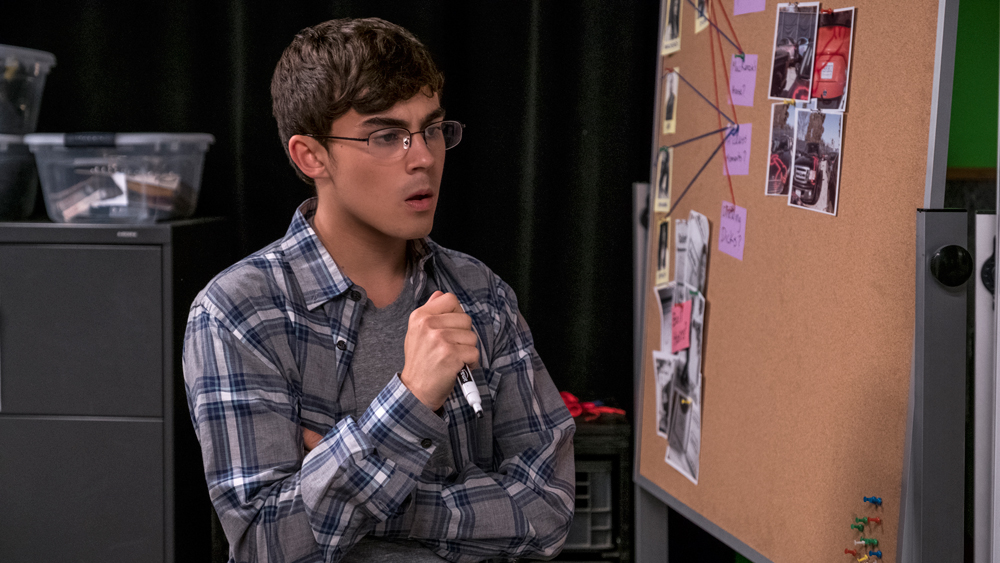‘American Vandal’ Bosses on the Importance of Docu-Style Earnestness Over Parody
By Danielle Turchiano
LOS ANGELES (Variety.com) – When “American Vandal” co-creators and executive producers Dan Perrault and Tony Yacenda were first pitching their high school-set crime mockumentary, they wanted to treat the material as if they were talking about a documentary, so they didn’t fall into the trappings of parody.
“We didn’t want to do a parody where we were making fun of true crime documentaries because we genuinely love them,” Yacenda said at the ATX Television Festival panel for the Netflix limited series Friday.
The duo had previously collaborated on “a lot of shorts, genre parody, mockumentary, and were always on the lookout for new genres and new tropes,” Perrault said. Inspired by “Serial” and “Making a Murderer,” they saw a new trend and a way to continue their work from the online mock “30 for 30” episodes they had recently worked on for projects like “Space Jam.”
“I said to Tony we’ve got to do something about this, and Tony came up with dicks,” Perrault said of the crime genre.
They teamed with Funny or Die’s Joe Farrell and focused on talking about he show conceptually, as if it was an actual case set in a real-life high school.
“We went into pitches with a case file of evidence,” Farrell said. “Dan Perrault would slowly push evidence across the table. …There was no wink in the pitch.”
It was also important for the team to hit both the comedy and mystery elements equally so everyone in the pitch — and later in the public audience — would be invested in both.
“We have these major elements that are funny, but once that’s set, the approach is completely earnest. Let’s tell this real story, let’s tell this really tense documentary,” Yacenda said.
Once the show sold at Netflix, Dan Lagana came aboard as showrunner, connecting with the material because his own teenage stepson had gotten in trouble at school for drawing a penis that Lagana was adamant he did not do. But his sensibility and attention to detail also matched what the other guys were looking for, which is what made the perfect fit. For example, they all said stunt casting was out because it would feel more real if the characters were played by newer, unknown faces.
They also wanted to keep the look of the show in-line with documentaries, so they hired the director of photography who also shot the Amanda Knox Netflix documentary and their docuseries “Chef’s Table.” They populated their editing staff with people who work on Michael Moore projects.
Still, the show centers on high school students making a documentary, so the producers admitted it was a “dream” that if a camera operator said they didn’t know if they got a certain shot, they could say, “A 17-year-old wouldn’t have gotten it either,” Perrault said.
Yacenda also directed the series, leaning heavily on improvisation to find the “spontaneity” of a real documentary.
“Tony would start with an improvised take, and it would be like 10 minutes, sometimes we’d get to the story points, sometimes we wouldn’t,” Farrell revealed, admitting he was concerned about that style of shooting on the first few days, unsure if they were getting the material they needed.
But Yacenda said the reason he worked that way, as opposed to doing alt-takes after banking the scenes as written, was because they didn’t want to just “fish for alt punchlines to a joke you’ve got in there.”
“Sometimes that can work and be really funny but we’re not just looking for alt-jokes,” he said. “It was a performance thing.”
The actors would jot actual things down in their notebooks, and often Yacenda would have them read questions from them to throw off their other actors.
At the end of the show, the real moment won over the comedy, too, pointed out Lagana. “A lot of people were waiting for the comedy at the end, but that’s not the show we wanted to give them,” he said. The idea, instead, was to make the audience realize this story was really Dylan’s (Jimmy Tatro) and that he may have been the kid you hated in high school, too, but he was humanized in perhaps an unexpected way.
Another way to ensure the realism was to pull from their own lives. Perrault shared that he once hosted a morning show, and he pulled elements from his experience working with the audio-visual department at his own high school into his fictional school.
“The high school version of Sarah Koenig would be an A.V. kid,” he noted.
The producers also stole from modern day teenagers, as well, including Lagana’s stepson. In this process they learned that movies like “The Breakfast Club” and “Mean Girls” might be a bit outdated because “today it’s more about individuality and finding your own aesthetic — they used that word,” Yacenda said.
Similarly Yacenda said the production team had to “pick a lane with the aesthetic of” their first season of the show around the individual characters who were doing the same. But looking ahead to the second season, they are excited to explore some from other true crime docuseries styles.

